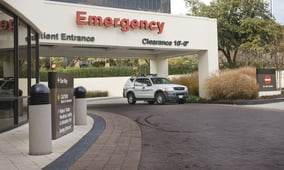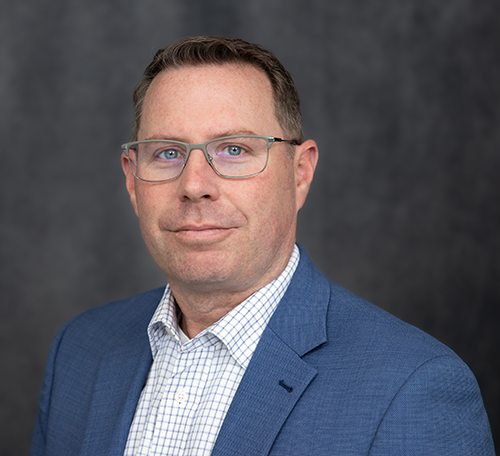You may have seen the article this weekend in the Omaha World-Herald about the status of rural health  care. If you haven’t, you can find it here.
care. If you haven’t, you can find it here.
Certainly some of the names and locations mentioned in the article hit close to home, and many are longtime, good customers of Cassling. But I’m personally disappointed that the article misses the mark when it comes to a critical look at rural health care. If you read the article, it spends the majority of its time suggesting that the only way to fix rural health care is to expand Medicaid in Nebraska. Only twice does it make a note that the problem is bigger than Medicaid expansion and solutions can be found without expansion. In fact, if you read the article, right after it mentions that the problem is “much broader than Medicaid expansion” it suggests that Medicaid expansion is the solution.
On the contrary, rural health care is a very complex topic. I think we have to boil it down to three key items: access, control and jobs. The right answer to the rural health problem is the appropriate balance of all three. Let me explain.
First of all, you will notice that I don’t mention money. The reason is because it’s too volatile right now. The government has promised to fund 90 percent of the program in any state where Medicaid is expanded—and they have so far—but it also promised to fund risk corridors for payers in the exchanges, money that the insurers haven’t and likely won’t ever see. Not to mention, there is no guarantee that future Congresses will agree to continue to fund 90 percent. Last I checked, the federal government didn’t have a bunch of extra money laying around and has a looming crisis in terms of debt and deficits. So rather than suggest the money is or isn’t an issue here, let’s not even consider it. I think the other three arguments are just as compelling when considering a solution. (Before you stop reading, yes, we will have to consider cost with any solution, and it will have to be workable. I’m not ignorant to that fact, but I want to be clear this is not just a money issue.)
- So, let’s tackle the three key issues around rural health. First, access. This is a big deal. Critical Access Hospital (CAH) status was created to ensure that rural residents had medical care close by. But it’s possible that an effective health-care system doesn’t require every hospital to have equal, comprehensive services. What can be generally agreed upon is that we have to have appropriate emergency coverage and close-by outpatient care. There’s a continual push by the CAHs to recruit visiting specialists for clinic visits and care. This is evidence of the competitive nature to have “access” to more complete and broader care options. Do we need to have inpatient beds in every community that currently has a CAH? I’m not sure. But no one wants to lose access to certain levels of care, and many look at a loss of inpatient beds as the first step in losing their entire health-care organization.
But quietly in the background there is work being done to develop a model for this sort of care. Both the U.S. Senate and the Kansas Hospital Association have proposed a new reimbursement model that would help hospitals shape the care needed to today’s delivery model—eliminate inpatient bed, pay more for emergency care and support outpatient clinics. - If we can get over the problems with access, the second issue is control. It’s pretty clear in the cities that fewer and fewer hospitals are able to survive independent from one another. We are quickly moving from a world of a bunch of independent hospitals all serving different communities to a small list of Integrated Delivery Networks that together care for broad populations across metropolitan areas, and even regions that extend across state lines. But in rural communities, the hospitals are often controlled by the county or city government, and the idea that an outside entity would control the way the hospital serves the community is a very scary one. The idea of a hospital, which for decades has been controlled by an elected board, is now part of an entity based in the “big city” is not welcome and often damaging to those who support it.
But it’s also clear that scale is necessary for survival. So you have facilities that have an option—one is to join a larger health system; the other is to look at some of the new models that may help. Organizations like Enhance Health Network are blazing a trail that tries to federate (not buy, not control, but coalesce) a larger group of urban and rural hospitals with the goal of bettering health care by sharing best practices, generating purchasing power through scale, and identifying better and more efficient ways to deliver medicine to a large geography while maintaining local control. - And that brings us to the final idea—jobs. Look at most rural communities today. Populations are slowly declining, rural manufacturing jobs are disappearing and the hospital is often the largest employer in the county. So the idea of eliminating even a portion of the hospital is a precarious one. We have to work together as states with high percentages of rural geography to figure out how to support a key base of health-care employees while not over spending on care. This isn’t easy. I worry that those who say rural heath care is expensive and unnecessary also ignore the impact on the larger economy that these jobs play in rural America. This, not Medicaid expansion, is the biggest story in rural health care. Sure, expansion proponents will argue that spending the money on expansion will save hospitals and, therefore, jobs. But that’s not the right answer. That says throw money after a bad model. (Remember, it’s not like closures haven’t occurred in Medicaid expansion states.)
The real answer is to help local decision makers find ways to share responsibilities and, as a result, create efficiencies across organizations. What do I mean? I mean if every rural hospital fights to keep every service, we face many closures. But if hospitals near each other collaborate and share responsibilities—one hospital has inpatient beds, one has certain specialty clinics, etc.—they can come up with fiscally responsible ways to shape costs and save as many jobs as possible, all while making the transformation to the new world of health care.
This isn’t easy, and I’m not saying Medicaid expansion is necessarily the problem. But it alone isn’t the solution. There are plenty of things that can be done without expanding Medicaid to support and save rural health in America and it starts with dealing with some of the real issues around access, control, and jobs.






Comments